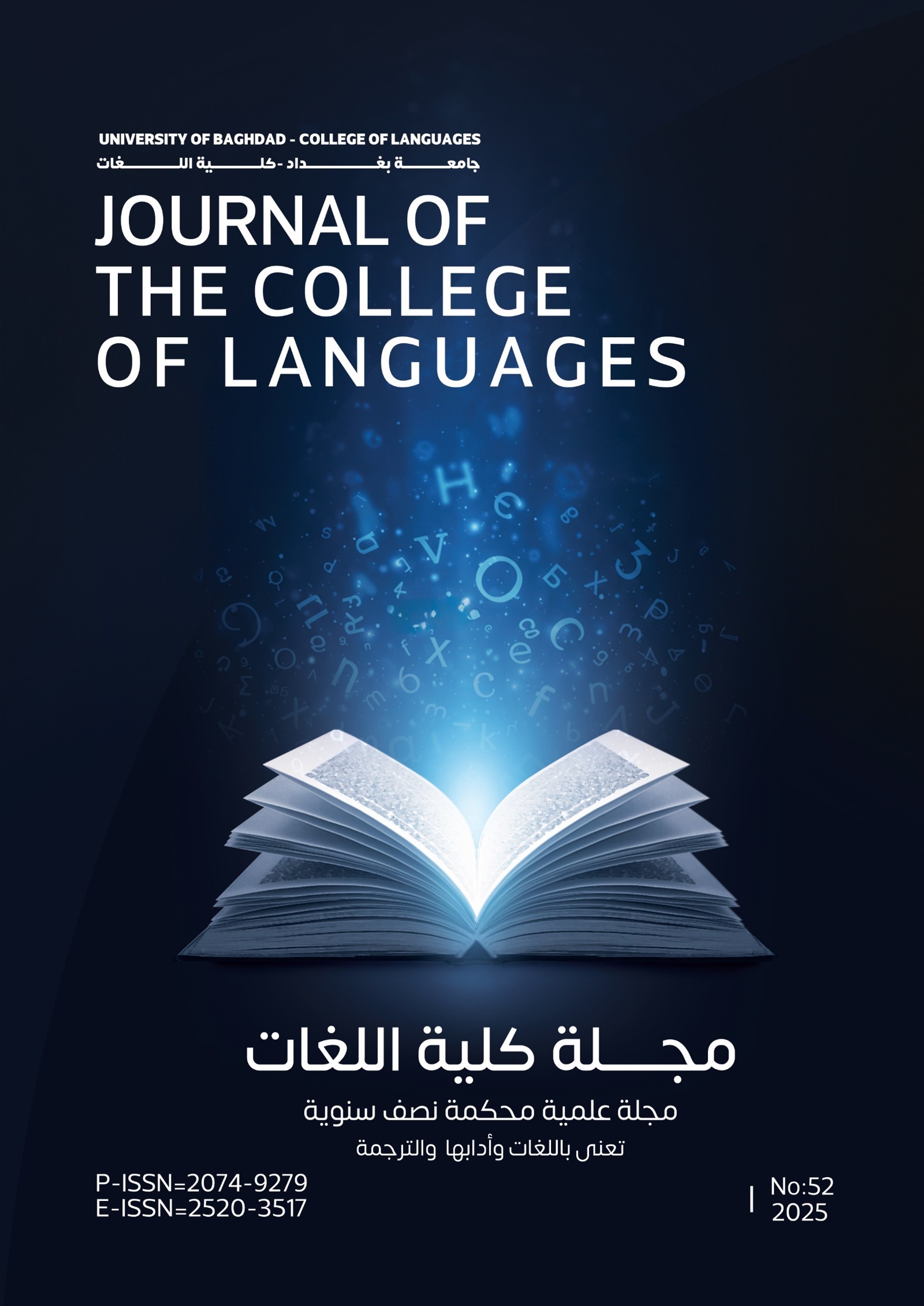A Pragmatic Analysis of Implied Meaning in Selected Poems by T.S. Eliot and Al-Sayyab
Keywords:
T.S. Eliot and Al-SayyabAbstract
In addition to its basic communicative function, language can be used to imply information that is not actually stated, i.e. addressers do not always state exactly (or directly) what they mean. Such instances fall within the domain of pragmatics in that they have to do with how addressers use language to communicate in a particular situation by implication rather than by direct statement. The researcher attempts to demonstrate that the beauty and the multiple layers of meaning in poetry can be better explored if the addressee looks at the lines from a pragmatic perspective in search for implied meaning. There are many devices that can convey implied meaning in poetry, among which are 'rhetorical', 'figurative' or 'literary' devices. But only certain of these devices convey implied meaning, and are thus, the focus of this study. They include metaphor, simile, metonymy, synecdoche, rhetorical question, symbolism, and allusion; in addition to pragmatic devices such as connotation, pragmatic presupposition and deixis.
The problem is that the implied meaning in a given poem (1) might not be grasped by the addressee, or (2) might be interpreted by the addressee differently from the implied meaning intended by the addresser, because, in either case, the addressee might lack awareness of the various figurative and pragmatic devices used by the addresser to convey implied meaning. When a poet uses implied meaning, the addressee is invited to reconstruct the meaning himself with the help of the context, and is, thus, obliged to a particularly active and strenuous participation in the poetry. Consequently, the present study attempts to detect such instances of ambiguity, analyze and disambiguate them as well as clarify the addresser's motives behind such cases.







